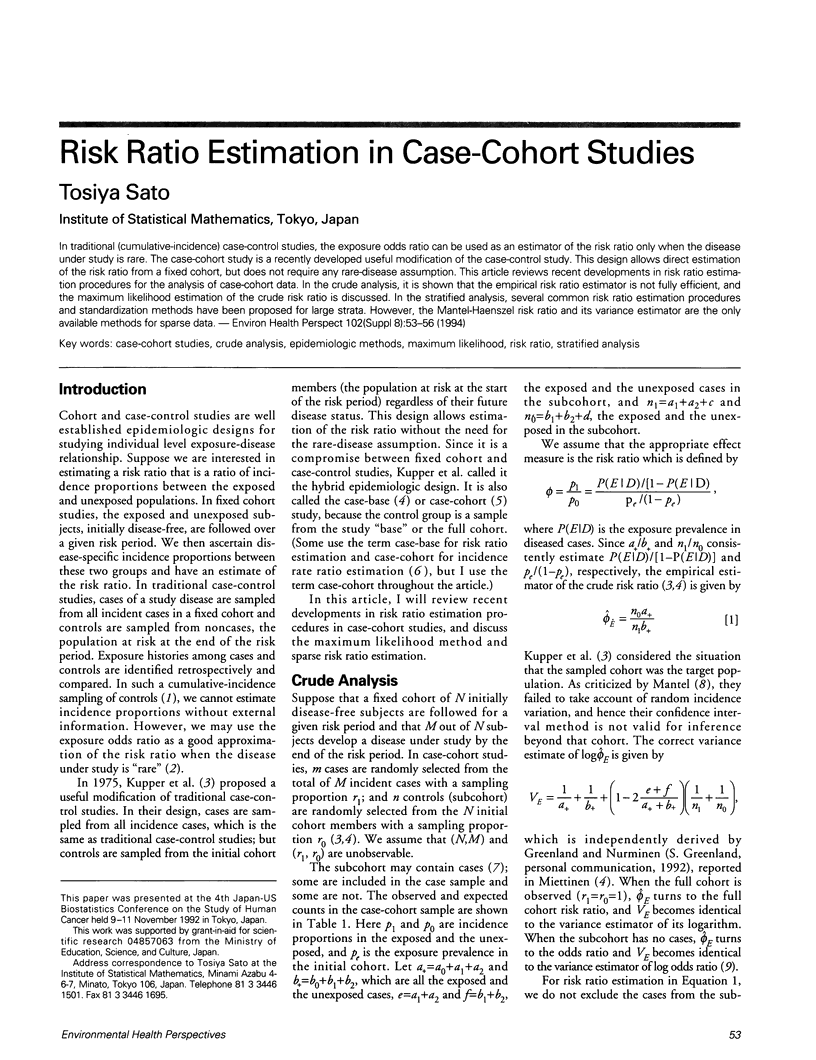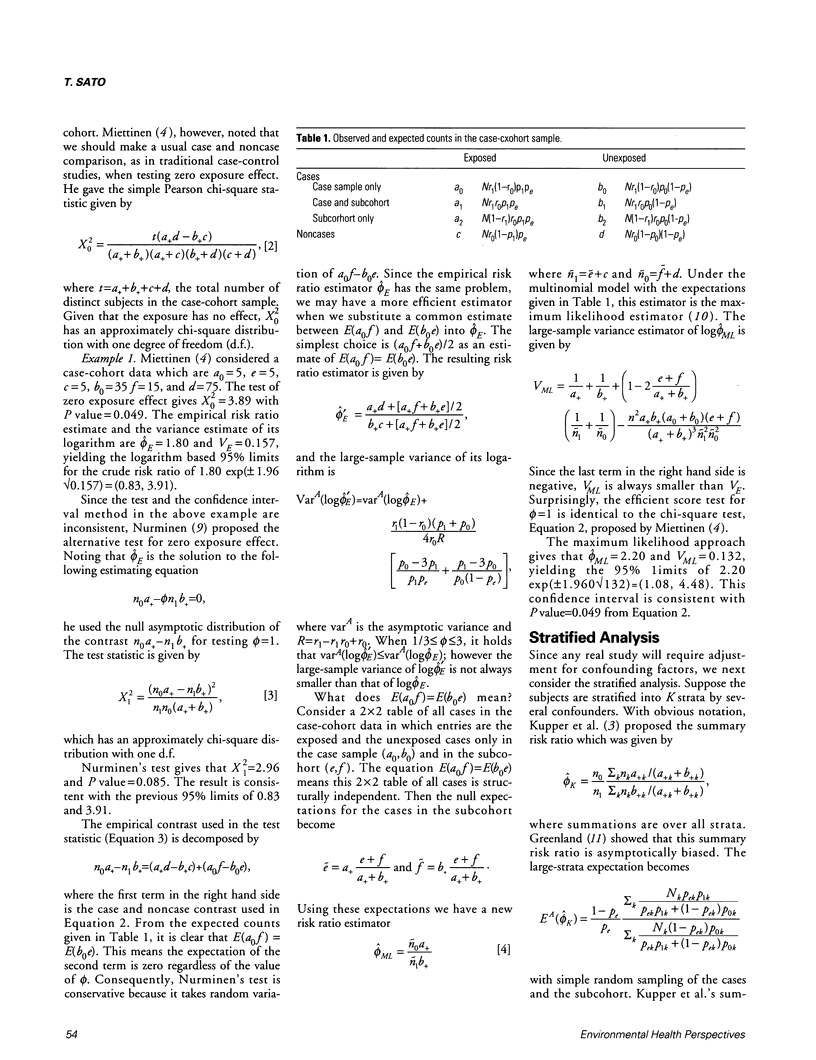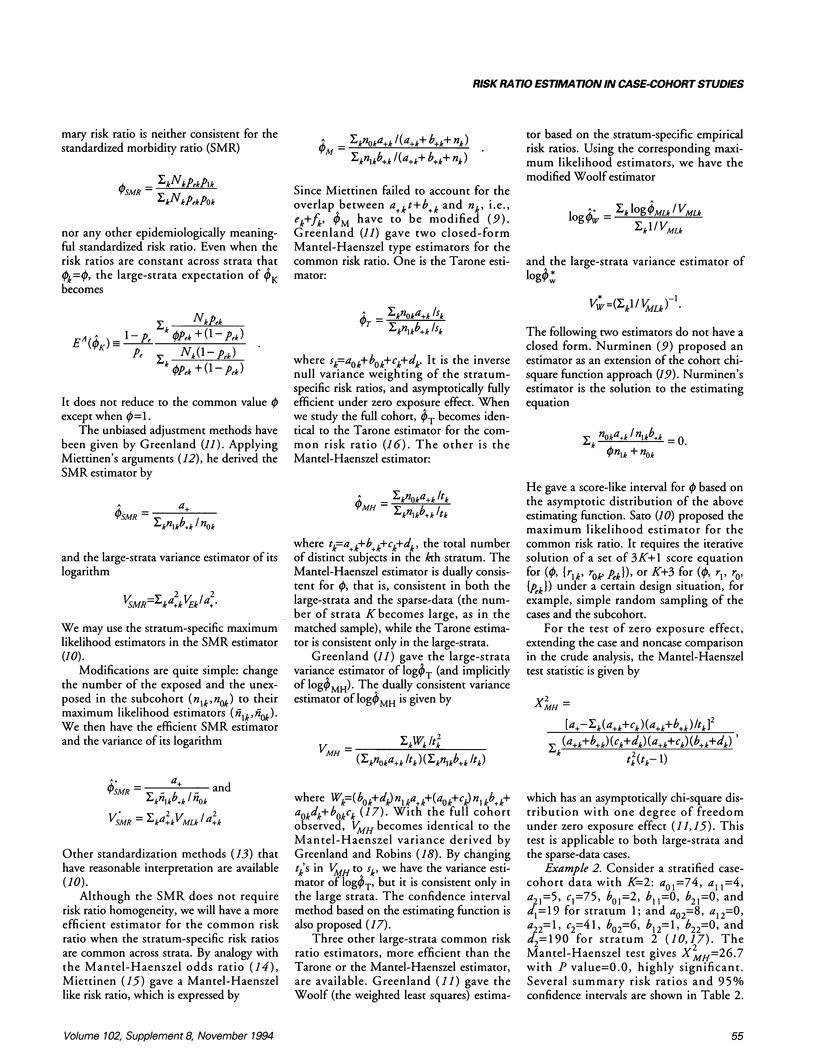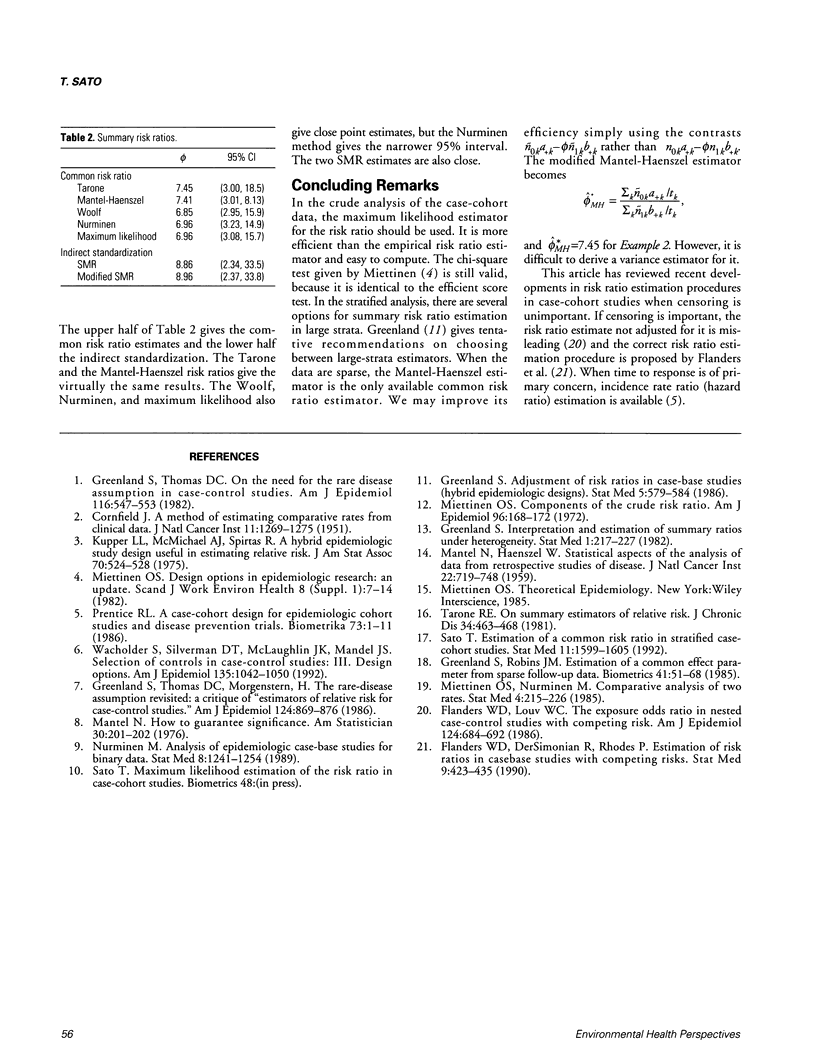Abstract
In traditional (cumulative-incidence) case-control studies, the exposure odds ratio can be used as an estimator of the risk ratio only when the disease under study is rare. The case-cohort study is a recently developed useful modification of the case-control study. This design allows direct estimation of the risk ratio from a fixed cohort, but does not require any rare-disease assumption. This article reviews recent developments in risk ratio estimation procedures for the analysis of case-cohort data. In the crude analysis, it is shown that the empirical risk ratio estimator is not fully efficient, and the maximum likelihood estimation of the crude risk ratio is discussed. In the stratified analysis, several common risk ratio estimation procedures and standardization methods have been proposed for large strata. However, the Mantel-Haenszel risk ratio and its variance estimator are the only available methods for sparse data.
Full text
PDF



Selected References
These references are in PubMed. This may not be the complete list of references from this article.
- CORNFIELD J. A method of estimating comparative rates from clinical data; applications to cancer of the lung, breast, and cervix. J Natl Cancer Inst. 1951 Jun;11(6):1269–1275. [PubMed] [Google Scholar]
- Flanders W. D., Dersimonian R., Rhodes P. Estimation of risk ratios in case-base studies with competing risks. Stat Med. 1990 Apr;9(4):423–435. doi: 10.1002/sim.4780090413. [DOI] [PubMed] [Google Scholar]
- Flanders W. D., Louv W. C. The exposure odds ratio in nested case-control studies with competing risks. Am J Epidemiol. 1986 Oct;124(4):684–692. doi: 10.1093/oxfordjournals.aje.a114442. [DOI] [PubMed] [Google Scholar]
- Greenland S. Adjustment of risk ratios in case-base studies (hybrid epidemiologic designs). Stat Med. 1986 Nov-Dec;5(6):579–584. doi: 10.1002/sim.4780050605. [DOI] [PubMed] [Google Scholar]
- Greenland S. Interpretation and estimation of summary ratios under heterogeneity. Stat Med. 1982 Jul-Sep;1(3):217–227. doi: 10.1002/sim.4780010304. [DOI] [PubMed] [Google Scholar]
- Greenland S., Robins J. M. Estimation of a common effect parameter from sparse follow-up data. Biometrics. 1985 Mar;41(1):55–68. [PubMed] [Google Scholar]
- Greenland S., Thomas D. C., Morgenstern H. The rare-disease assumption revisited. A critique of "estimators of relative risk for case-control studies". Am J Epidemiol. 1986 Dec;124(6):869–883. doi: 10.1093/oxfordjournals.aje.a114476. [DOI] [PubMed] [Google Scholar]
- Greenland S., Thomas D. C. On the need for the rare disease assumption in case-control studies. Am J Epidemiol. 1982 Sep;116(3):547–553. doi: 10.1093/oxfordjournals.aje.a113439. [DOI] [PubMed] [Google Scholar]
- MANTEL N., HAENSZEL W. Statistical aspects of the analysis of data from retrospective studies of disease. J Natl Cancer Inst. 1959 Apr;22(4):719–748. [PubMed] [Google Scholar]
- Miettinen O. S. Components of the crude risk ratio. Am J Epidemiol. 1972 Aug;96(2):168–172. doi: 10.1093/oxfordjournals.aje.a121443. [DOI] [PubMed] [Google Scholar]
- Miettinen O. Design options in epidemiologic research. An update. Scand J Work Environ Health. 1982;8 (Suppl 1):7–14. [PubMed] [Google Scholar]
- Miettinen O., Nurminen M. Comparative analysis of two rates. Stat Med. 1985 Apr-Jun;4(2):213–226. doi: 10.1002/sim.4780040211. [DOI] [PubMed] [Google Scholar]
- Nurminen M. Analysis of epidemiologic case-base studies for binary data. Stat Med. 1989 Oct;8(10):1241–1254. doi: 10.1002/sim.4780081008. [DOI] [PubMed] [Google Scholar]
- Sato T. Estimation of a common risk ratio in stratified case-cohort studies. Stat Med. 1992 Sep 15;11(12):1599–1605. doi: 10.1002/sim.4780111207. [DOI] [PubMed] [Google Scholar]
- Tarone R. E. On summary estimators of relative risk. J Chronic Dis. 1981;34(9-10):463–468. doi: 10.1016/0021-9681(81)90006-0. [DOI] [PubMed] [Google Scholar]
- Wacholder S., Silverman D. T., McLaughlin J. K., Mandel J. S. Selection of controls in case-control studies. III. Design options. Am J Epidemiol. 1992 May 1;135(9):1042–1050. doi: 10.1093/oxfordjournals.aje.a116398. [DOI] [PubMed] [Google Scholar]


